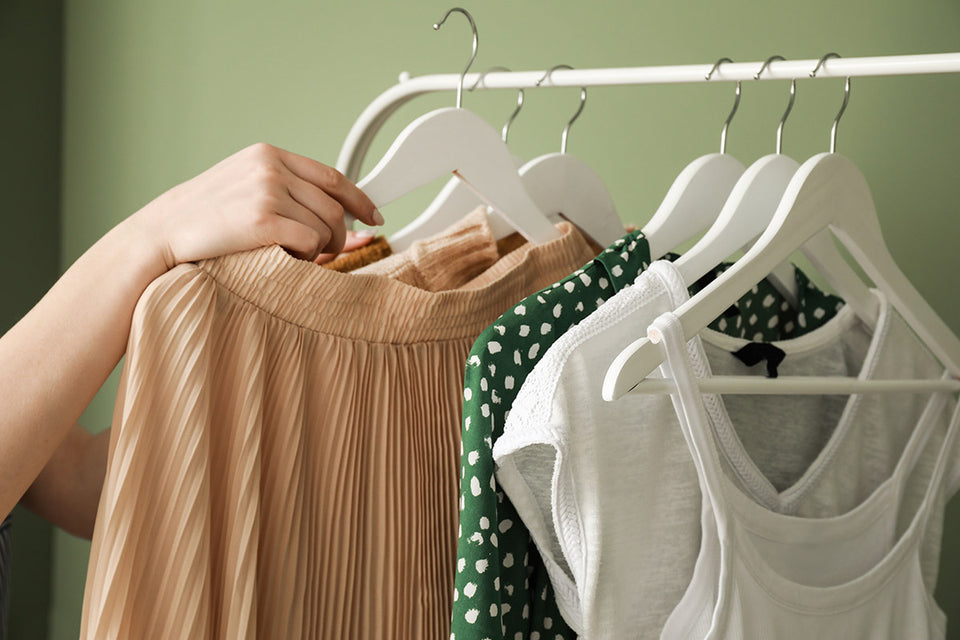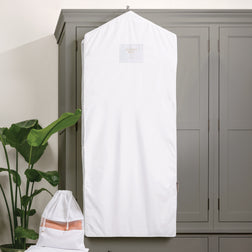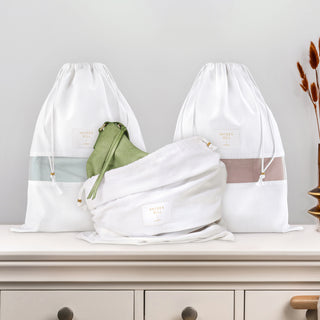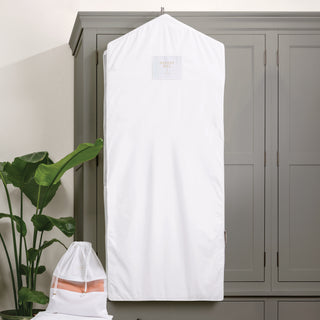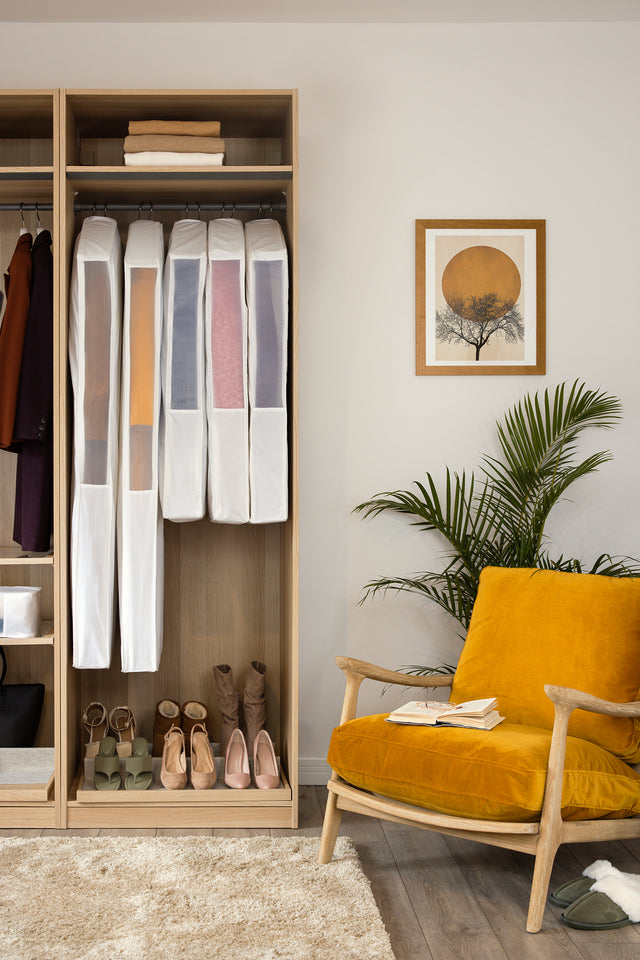Are you digging through piles of clothing to find that one special top to wear? Do you dream of a well organised closet where everything you need is at hand? This guide will make your dream come true!
TV shows about home organising like Tidying Up with Marie Kondo and Hot Mess House are hits for a reason. There is something so satisfying about watching a messy space be transformed into a beautiful, well-organised area.
Few areas of the home benefit from organisation more than the closet.
A clean, well-organised closet helps you get ready faster, and it preserves your most valued pieces of clothing.
That’s why we created this comprehensive guide to help you evaluate the way you use your space and store your clothes and accessories.
- Start with a Clean Slate and a Clean Closet
- Purge and Sort Clothes by Category
- Tools to Organise Your Closet
- Different Types of Hangers
- Common Ways to Organise a Closet
- Tips to Maintain an Organised Closet
Start with a Clean Slate and a Clean Closet
Every closet should be thoroughly cleaned at least a couple of times a year. It's most convenient to do this when the season changes since you most likely shift clothes at this time anyway.
This kind of deep cleaning can take some time, so it's best to plan it on a day when you have several hours of free time. If it’s not possible to clean an entire closet in one day, tackle it in sections over the course of a few days. It is best to use non-toxic, colour-safe cleaners on all surfaces to avoid damaging any textiles that could come into contact with those surfaces later on.
Deep cleaning goes a long way towards protecting your clothes from moth infestations.
Clothes moths love dark, undisturbed areas where natural fibres might hold hair, skin cells or remnants of perspiration and organic stains. Even if your closet isn't prone to being dusty or messy, taking everything out to wipe down the walls and surfaces, plus vacuuming or sweeping the floor, is a great way to prevent infestations or discover them before they go too far.
There are other surprises you may find while deep cleaning. Items made of cashmere and silk may not show perspiration stains until they've been in storage for a while. Even if they were freshly laundered before entering long-term storage, you may discover your luxury pieces have a yellowish tint or other discoloration. Fortunately, these items can be restored by treating stains with a silk or wool-safe stain remover before laundering, drying, and storing again.
Purge and Sort Clothing by Category
In order to organise your closet effectively, it's best to go through your belongings category by category, and get rid of anything you no longer like or wear. This helps you see what pieces you have in your wardrobe, and make room for new pieces to add to your collection.
Tops

Holding on to old shirts and blouses for sentimental reasons is common, but it’s best to limit those items to a small number. For most pieces, the general rule of thumb is that if you haven't worn a shirt or blouse in over a year, it's probably not an important piece of your wardrobe.
If you know you won't wear a top again, but your personal attachment makes it hard to donate it, consider placing the item in a memory box. Another option is to repurpose the fabric for use as a scarf, pillow, or quilt that can be used more regularly.
Bottoms
Ideally, you want a varied collection of bottoms that serve many occasions. This can add up to a lot of clothes quickly, however, and different fabric types and cuts need to be stored in specific ways.
Carefully examine denim pants and shorts for any unintentional wear-and-tear points. The inner thigh area is a common spot for damage that is difficult and costly to repair, so toss any that look like they're starting to fray.
As with tops, if you know you haven't worn an item in over a year, it may be worth donating or discarding. Pare your collection down to the most versatile, best-fitting pieces. If you've kept items in hopes of finding something else to wear with them, or in case they may fit again some day, you and your closet may be better served by letting those items go in favour of renewing your space.
Dresses
Because dresses vary widely in fabric, style and occasion, it can be difficult to decide how many is too many. The best gauge for determining what to keep and what to discard is not how often you wear a dress, but how well it suits you in terms of fit, colour, and versatility.
The more ways you can style a dress with different shoes, accessories, and outerwear items, the better it serves you and earns its place in your wardrobe. If you find a dress that is uncomfortable, doesn't flatter your figure, or is difficult to match with your shoes and accessories, it may be time to let it go.
Outerwear
Outerwear pieces are likely to see the most fluctuation in use throughout the year, and it's perfectly reasonable to keep one or two items that aren't worn as frequently as others. This is especially true for winter-appropriate clothing that may not be necessary every year or only if you're traveling to colder climates. These items can be quite expensive, so it's better to hang on to sturdy, quality pieces (like Merino wool clothing) even if you won't need them soon.
The same is true for business casual blazers, light jackets, and luxury sweaters made of Merino wool or cashmere. These are often purchased for use over a lifetime rather than a season or two. However, these items should be carefully inspected regularly for signs of distress, damage, or clothes moths.
Cardigans and sweaters that aren't as precious as their Merino wool and cashmere counterparts should be carefully evaluated for any stains and pilling that can't be corrected. It's one thing to keep a lesser-quality item for wearing around the house, but owning several takes up room you could use for higher-quality items.
Formal Wear
These pieces are rarely worn more than a few times a year and are typically made of luxury textiles that require careful attention to detail when cleaning and storing. If you feel that your formal wear pieces take up too much space in your main closet, you may decide to relocate them to a different closet or rent a climate-controlled unit at a storage space facility for their safekeeping.
Some items, such as bridal gowns or ceremonial pieces, may never be worn again but deserve a place in your collection as heirlooms to be handed down through generations. In this case, it's even more important to find storage space solutions that are specifically designed to preserve these items and protect them from damage due to age, environment, or pest infestations.
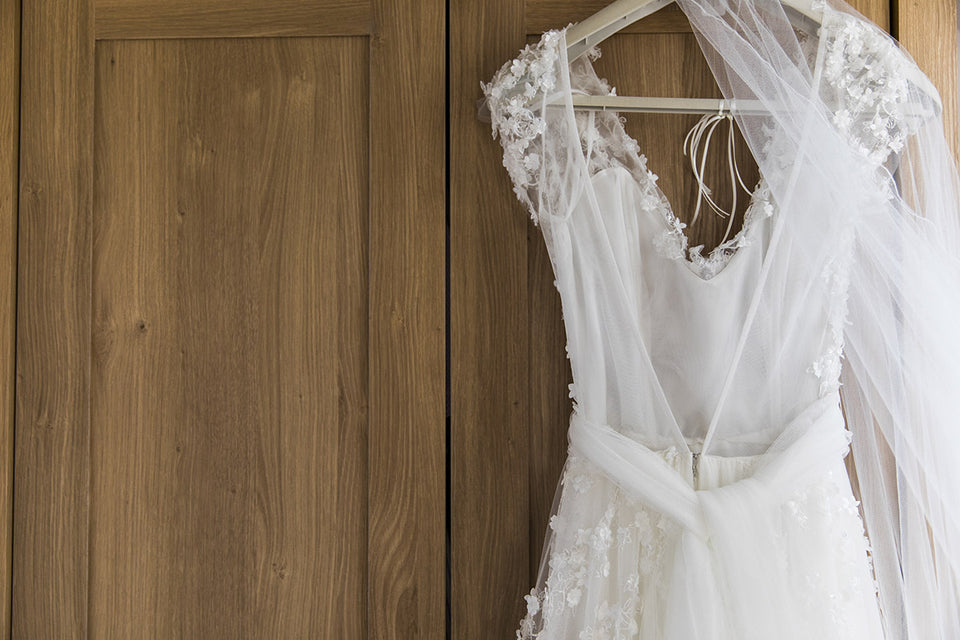
Shoes
Due to the variety of styles of shoes, storing them neatly can prove next to impossible, especially when you have a large collection. When you're deciding which pairs to keep and which ones to discard, prioritise shoes that are in excellent shape and can be used with as many different outfits as possible.
Heavily scuffed or broken shoes should be taken in for repair and cleaning when possible or discarded entirely. Specialty shoes, like snow boots, may not be worn often but still serve an important purpose — consider keeping items like this in a utility closet instead.
Accessories
Because accessories like belts, scarves, hats, and purses can be worn with a number of outfits, it can be hard to let any of them go. However, they can often be a major source of disorganisation in a closet, so sorting through them to keep only the most useful pieces is a worthwhile task.
It goes without saying that damaged items should be discarded. This could be purses with busted zippers or belts with frayed holes. Hats that have lost their form and scarves that are unravelling should also be sent on their way unless you're reasonably certain you can have them repaired.
Tools to Organise Your Closet
A well-organised closet requires different tools to define the space and keep items in their place. You may need to use a combination of the following to help you achieve your organisational dreams.
-
Dividers
Most dividers are made of plastic or metal. But some sturdy canvases can be stitched together to create useful divider inserts for drawers or shelves. -
Hooks
Items like purses, belts, and scarves are easy to sort using hooks. If you want to avoid putting holes into the wall or peeling away paint, you can use hooks with adhesive backings that don't cause damage. -
Baskets and boxes
A great way to keep shelves and floor space looking tidy is with matching baskets and boxes. If you can't attach a label to the side of a box, consider tying one to a handle or wrapping a ribbon around it to identify what's inside. -
Labels
These should be easy to read at a glance or color-coded for faster identification. You can also use labels on a hanging rod to help separate clothes by type or occasion. -
Trays
Whether on a shelf or in a drawer, trays can help keep small items from getting lost in the mix of other accessories and belongings. You can also use a tray to group coordinating pieces for easier outfit pairing later on. -
Shelves
There are a lot of choices when it comes to affordable, easy-to-install shelving that can help you use your closet space more effectively. The more versatile the system, the better it will serve the shifting needs of any closet's organisational style as you purge old items and acquire new ones.
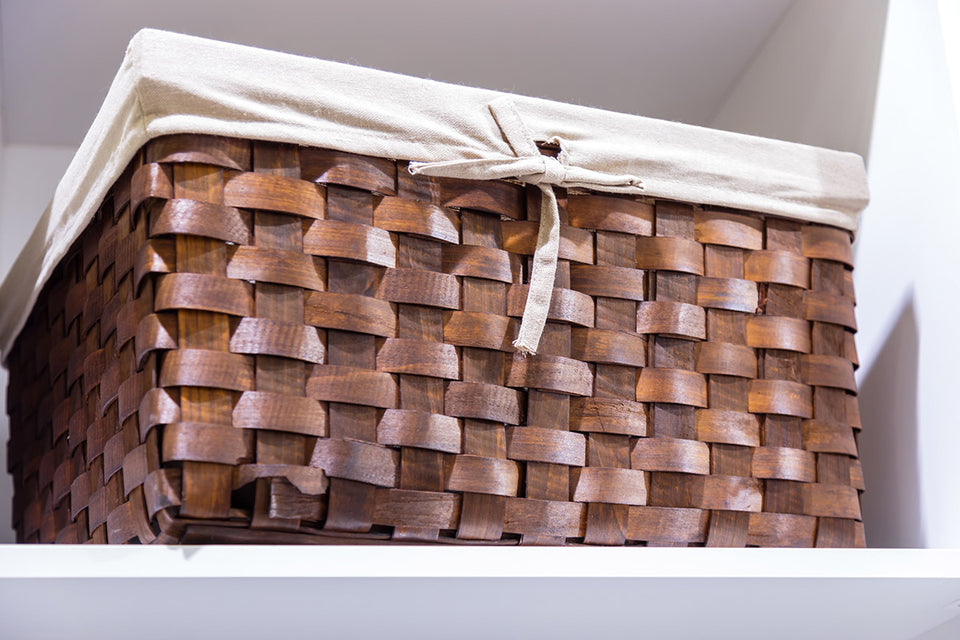
Different Types of Hangers
While some clothing items, like wool sweaters and jeans, are best stored folded and stacked in neat piles, most clothing fares better on a hanger. However, not all hangers are made equal. Different types of clothing require different types of hangers.
- Standard. These are certainly the most common type of hanger, but they are not the most versatile. Standard hangers without notches or hooks aren't suitable for clothes that have wide necklines, are made of slippery material, or have thin straps.
- Ultra-thin. Just as the name implies, these hangers are much thinner than the standard style. These work great for closets with limited space. They're usually coated with a velvet-like texture that keeps items from slipping off.
- Clipped. This style of hanger is meant for use with bottoms like pants and skirts. However, it can also be used for strapless dresses and tops.
- Combination. This hanger combines the function of a standard hanger and a clipped hanger in one. This is a great solution for pairing coordinating tops and bottoms.
- Notched. A notched hanger can be standard, ultra-thin, or combination style. They're meant to be used with clothing items that have thin straps or plastic inner straps that help the garment hang appropriately.
- Single-rod. These hangers have an open side and are meant for use with pants and other items that are folded over the base of a hanger to prevent becoming misshapen while in storage.
- Tiered. A tiered hanger may have several straight rods for hanging multiple bottoms on one hook or may be a series of connected standard hangers for use with several tops. Some standard hangers may have holes beneath their hook so that other hangers can be inserted in a tiered fashion.
- Padded. Thick or thin, padded hangers are great options for delicate clothing that needs to keep its shape. Although wool should be folded rather than hung, if a sweater must be hung, this hanger type will prevent indentations from wearing into the sweater’s shoulders.
- Contoured. Stiff, contoured hangers made of hard plastic or wood are specifically designed for suit jackets and blazers, which need to be treated carefully to keep their straight-shouldered shape intact.
-
Hanging Bags. Hanging storage bags are a great way to preserve speciality or seasonal pieces and keep them from getting pressed or damaged while in storage.
We recommended using Hayden Hill hanging garment bags to preserve the beauty of your clothing. Our bags are made of organic, soft cotton with a sheer, organza side panel so you can see your pieces while keeping them protected from light, dust, and moths.
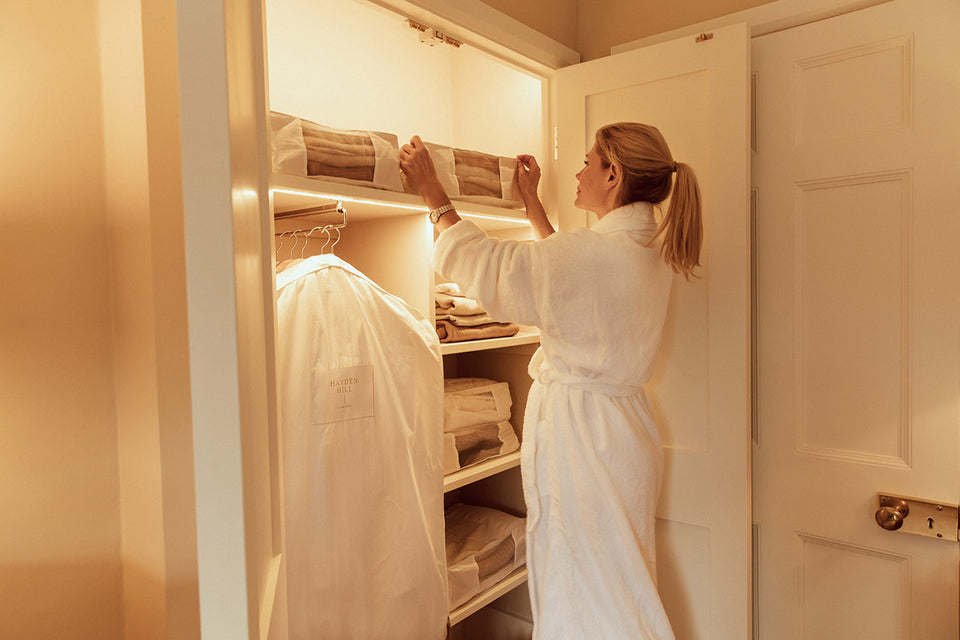
- Cedar. Cedar hangers can be made in a variety of the above styles, but are most commonly found in standard and contoured hanger styles. Cedar is a natural moth repellent that helps keep moths at bay.
Depending on your closet’s design, you may need to prioritise which items are hung and which are folded. Generally speaking, thick fabrics that won't wrinkle easily, or casual items that aren't worn outside of the home, can be folded rather than hung. Wool items, like cashmere or Merino wool sweaters, can stretch and become permanently misshapen when stored on a hanger.
Common Ways to Organise a Closet
Whether you have an entire closet to yourself or share it with a partner, you should pick a closet organisational style that works best for your lifestyle. If you recognise one of the following styles as what you've been using, but you continue to struggle with keeping everything organised, it may be time to experiment with a new technique.
Occasion
This organisational method works best for people with a very predictable schedule and a good grasp of how the pieces in their collection work together.
With occasion organising, you preselect outfits, including jewellery, shoes, handbag, and hat, and put them together for the week. Some people find that putting the jewellery in a see-through bag and clipping it to a hanger along with the matching handbag and shoes is helpful. Others may choose to sort their accessories on corresponding shelves and make matching labels.
Because this method is typically used to organise only a week’s worth of outfits, you will need to choose a secondary sorting method for clothes and accessories that aren't included in that week's picks.
Season
In locations where there are distinctive seasonal patterns, this type of organisation is the norm. Heavy winter clothing items are bulky, and most people naturally pack them away for more closet space when the weather gets warmer.
Seasonal organisation can follow other patterns, as well. You may prefer to wear a certain collection of colours in a particular season, such as rich jewel tones in the autumn and winter months, with lighter pastels and crisp whites for spring and summer.
This organisational method coincides with regular closet cleanings, as well. With the turn of each season and the shift in wardrobe arrangement, you'll have ample opportunity to dust, sweep, or mop every corner for a fresh start four times a year.

Department
This tends to be the default organisational style for many people because it's the simplest and easiest to maintain. You simply group each category of clothing together rather than determining which piece is right for an occasion or season. If you live somewhere with a temperate climate all year round, you don't need such clearly defined seasonal choices on hand.
Department-style organisation can get tricky when you have a lot of clothes. You tend to reach for what's easily found when piecing together outfits, which means some items can be forgotten or fall into disrepair.
But, if you prefer this organisational technique, it’s best to clearly define each category. You can use department store-style tags between tops, pants, skirts, and dresses to help you further define where each section begins and ends.
This type of organisation can also work well in combination with occasion-style organising. The bulk of your clothing can be sorted by category while the most accessible part of your closet can be reserved for pre-planned outfits.
Colour
This may be the most eye-pleasing way of organising a closet since it creates a kaleidoscope of colour at a glance. It is most helpful to those with a wardrobe that has a variety of colours. By colour-sorting clothes, you can pick out coordinating pieces for an outfit in minutes, rather than flipping through a dozen pieces.
Organising by colour works with several other organisational methods, as well. With a department method, you can set up clearly defined sections that place all the tops of the same colour together and hang them by sleeve-length from shortest to longest. The same applies to dresses and skirts.
When color-sorting patterned items with multiple colors, place an item with the predominant color when possible, or group misfit items together as a miscellaneous category.
Tips to Maintain an Organised Closet
Organising a closet for the first time requires significant time and effort, but keeping a closet clean and organised is just as important. Keep these tips in mind on how to maintain your closet system on a regular basis.
-
Small daily steps make a big difference over time.
It's okay to toss an item across the nearest chair when you know you're going to be using it again later that day, but make a habit ensuring all of your clothes are in the right place at the end of the day. These few minutes each day will keep your closet manageable and tidy. -
Take photos of picture-perfect cleanliness.
A beautifully organised closet is a work of art, so take a picture to have a visual guide of what your closet can and should look like. -
Schedule routine deep cleans and purges.
Go through your closet and your collection of clothing at least once a year at minimum to air everything out and identify any pieces you no longer want or use. Regular closet cleanings also help keep pests at bay and keep you interested and aware of what you have in your wardrobe.
Taking the time to organise your closet well will pay off every day when you enjoy being in the space and can easily find all the components of the perfect outfit.
